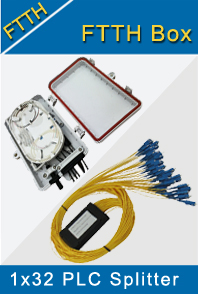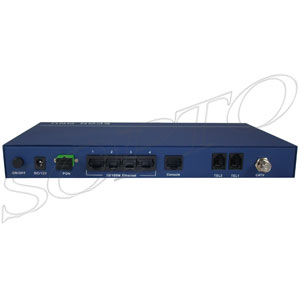-

- Sopto Home
-

- Special Topic
-

- FTTH Knowledge
-

- WDM PON Introduction FAQ
FTTH Knowledge
- Solving the FTTH Rollout Problem in Multiple Dwelling Units
- WDM PON Introduction FAQ
- A Simple Overview of Optical Power Meter
- ODN is based on PON FTTH Optical Cable Network of the Device
- Using an OTDR to be an Expert in Fiber Link Testing
- How FTTH Broadband Works?
- Connections among Fiber Terminal Boxes & Patch Cables & Pigtails
- Easy to Install a Fiber Terminal Box
- What is Arrayed Waveguide Grating?
SOPTO Special Topic
Certificate



Guarantee
Except products belongs to Bargain Shop section, all products are warranted by SOPTO only to purchasers for resale or for use in business or original equipment manufacturer, against defects in workmanship or materials under normal use (consumables, normal tear and wear excluded) for one year after date of purchase from SOPTO, unless otherwise stated...
Return Policies
Defective products will be accepted for exchange, at our discretion, within 14 days from receipt. Buyer might be requested to return the defective products to SOPTO for verification or authorized service location, as SOPTO designated, shipping costs prepaid. .....
Applications

Sopto supply the best FTTH solutions for your network!
SOPTO Products
- Fiber Optic Transceiver Module
- High Speed Cable
- Fiber Optical Cable
- Fiber Optical Patch Cords
- Splitter CWDM DWDM
- PON Solution
- FTTH Box ODF Closure
- PCI-E Network Card
- Network Cables
- Fiber Optical Adapter
- Fiber Optical Attenuator
- Fiber Media Converter
- PDH Multiplexers
- Protocol Converter
- Digital Video Multiplexer
- Fiber Optical Tools
- Compatible
Related Products
Performance Feature
FTTH Knowledge
Recommended

WDM PON Introduction FAQ
1) The first question: we need to define, what exactly is the WDM-PON and the relevance in the industry?
WDM PON is really the idea of putting multiple wavelengths onto an existing passive optical network. Today’s PON networks tend to have something like one downstream and one upstream wavelength, they may have an additional wavelength in the downstream for our video, but they are limited in terms of the number of wavelengths they support.
Service providers are always looking for opportunities to expand the utility of the fiber infrastructure they may have placed. And the WDM PON is the idea that I can put something like 32 wavelengths down and maybe 32 wavelengths up, on the same PON fiber that they may have installed or thinking about installed and for a deep fiber access network.
2) If say Other PONs technology is a little “out”? Is there WDM PON extension or revolution, or something new?
Today there’s really three different PON technologies available on the market place: you have BPON, GPON (GPON) and EPON (10G-EPON), both BPON and GPON were developed by the full service access network, committee of the ITU-T. EPON was developed as part of the IEEE 802.3ah specification for fiber in the last mile.
When you look at the idea of multiple wavelengths moving beyond two or three wavelengths up on fiber that’s really tied to, So far, FSAN and the work coming out of the FSAN and committee vendor and service provider partners look to evolve beyond GPON. And where we go from there to increase the bandwidth utility of fiber, that is out there.
3) From an infrastructure and equipment perspective, what type of equipment is needed to deploy WDM PON? And is the same equipment that’s needed for GPON?
It is exactly the same type of equipment in today’s PON infrastructure you tend to have OLT (Optical Line Terminal) at the central office point of location, and then the unit that serving the customers to be cleared refer to as an ONT, optical network terminal.
So WDM PON would use those same OLT and ONT concepts. From the leading (WDM PON) companys’ portfolio perspective, the OLTs and the multi-service access platform, both of those were designed with the high bandwidth, high switching capacity capabilities.
That would lend themselves to an evolution from GPON to WDM PON. That is said, those devices could be upgraded and would be upgraded for WDM PON support, with a software upgrade and a line card module that would go from a single wavelength type of module we use in EPON, GPON today, to something that would be multiple wavelengths of the land of WDM PON network.
In addition to that there’s a lot of work going on right now in the area of the wavelength grid that we would use for those multiple wavelengths. That work is predominately focused around the idea of having GPON ONT, this remain compatible with a WDM PON OLT network.
With that case, the GPON ONT that’s already installed in the service provider could continue to be utilized and deployed literally side by side, with a WDM PON capable ONT in the future.
4) Other end user services are driving to GPON and consequently to WDM-PON?
Absolutely, serviced providers are looking to evolve their networks and the services they offer, from voice and high speed internet to video and multimedia type of entertainment. When you look at where we’re heading in terms of increased high-definition content, more personalization in terms of the consumer being able to get the type of content, where wants, what wants and how he wants that.
All that leads to more and more bandwidth is demanded on the network. So service provider certainly talking about revolution the GPON and fiber access networks like that, and then summer beginning to look at where we go from here when terms of GPON and the continued service mix, mostly driven by video and personalized type of entertainment services.
For more info, please browse our website.




